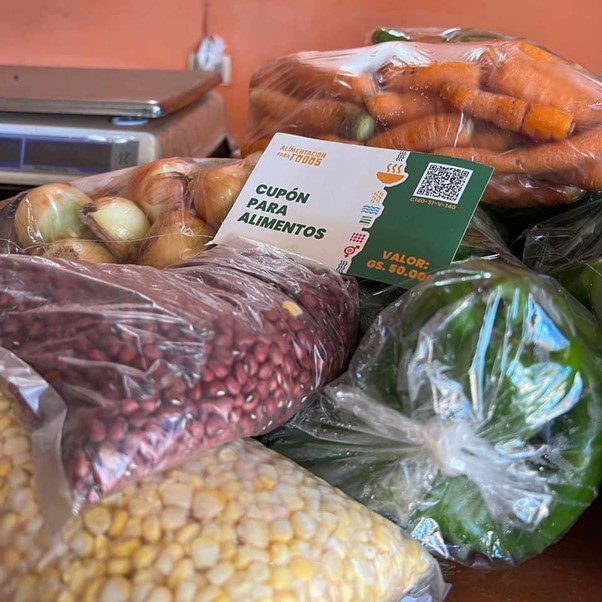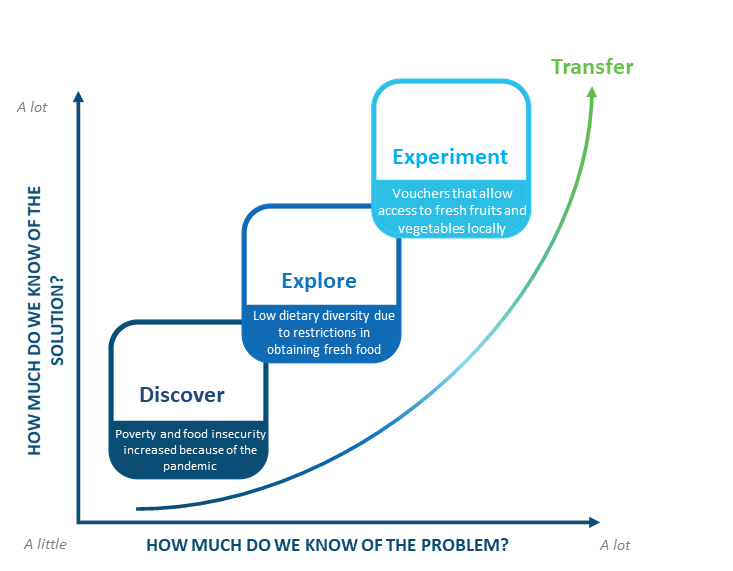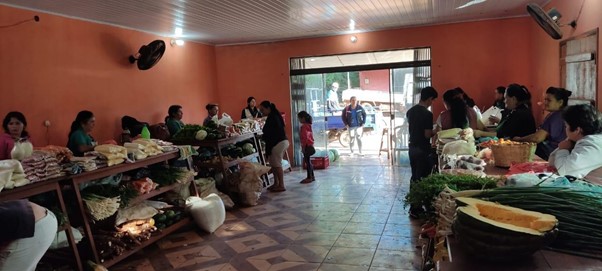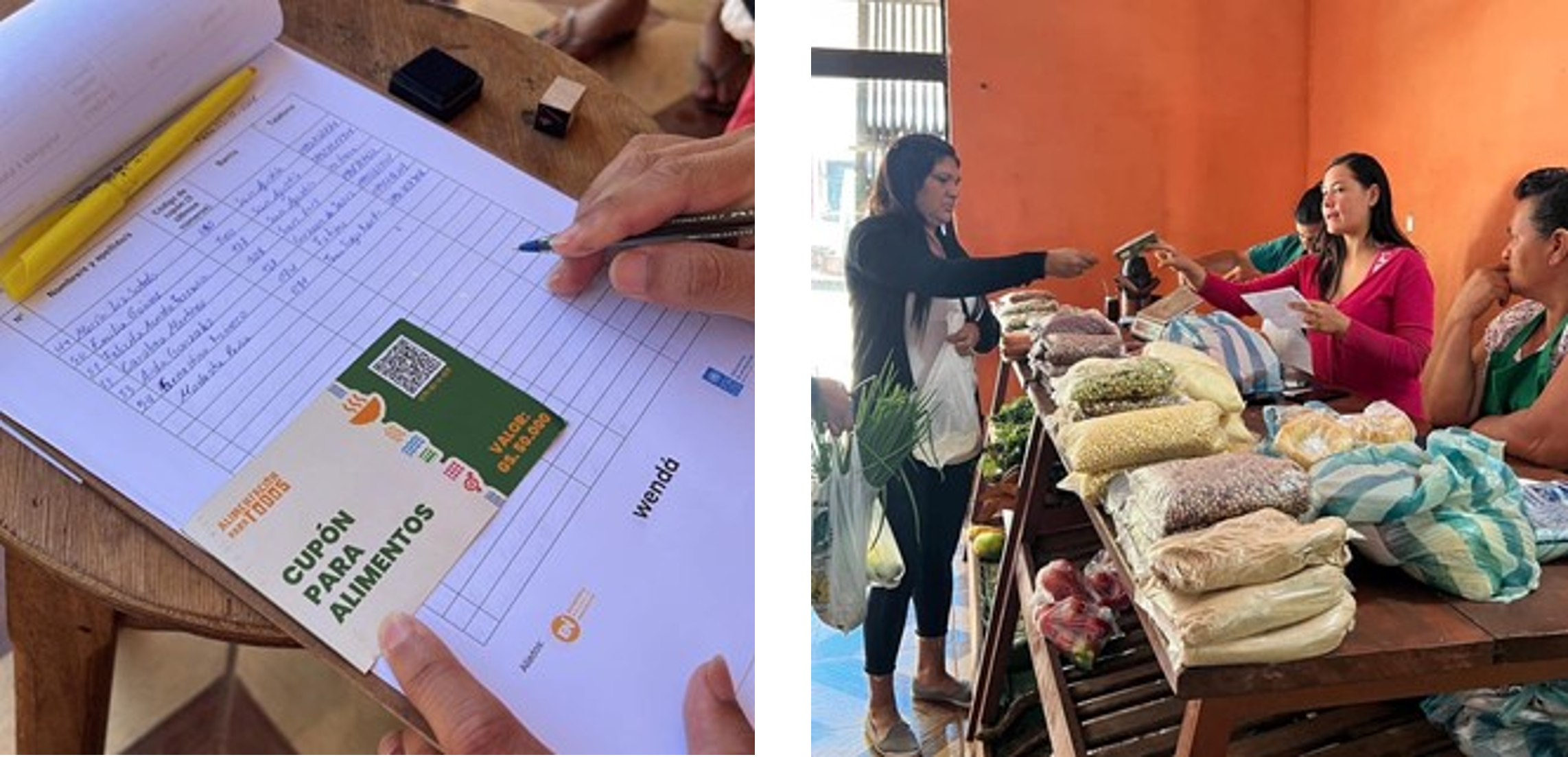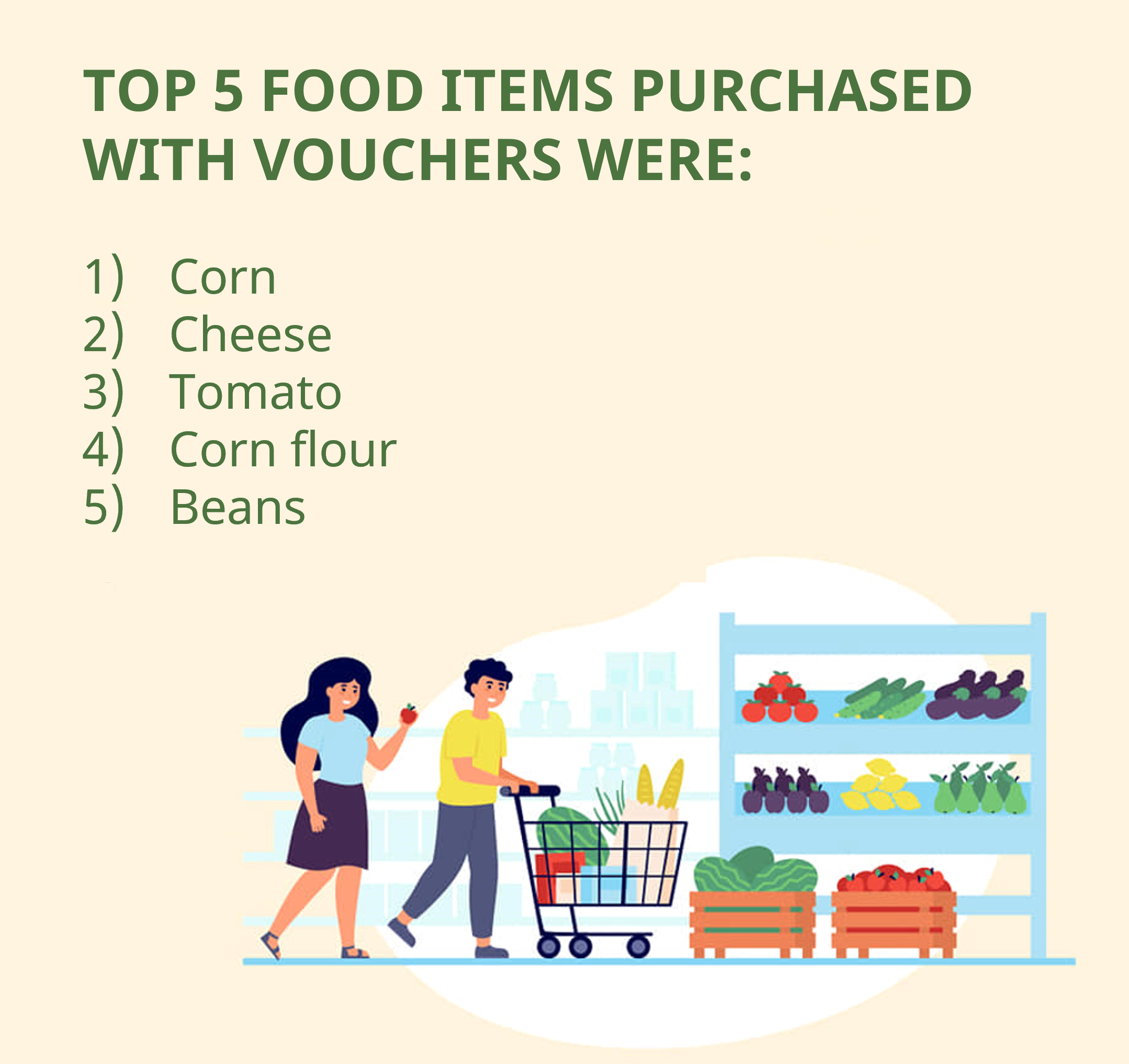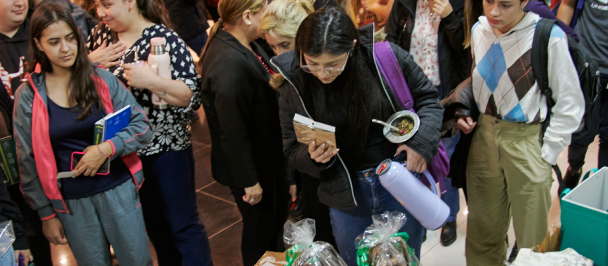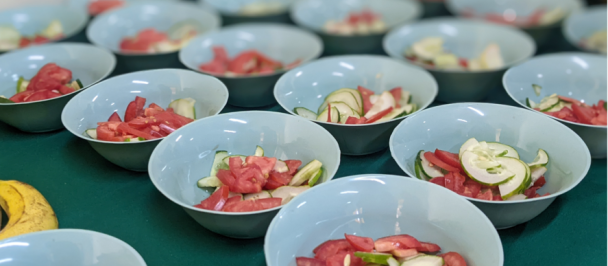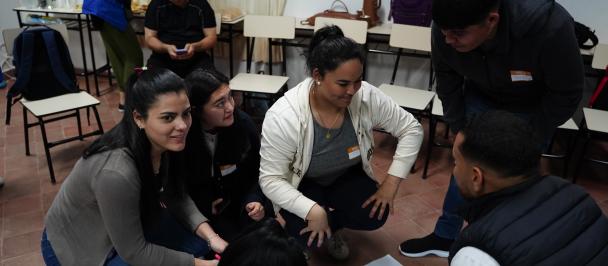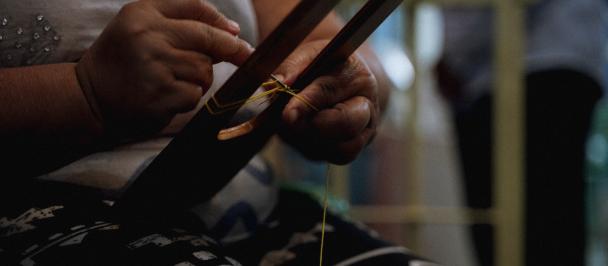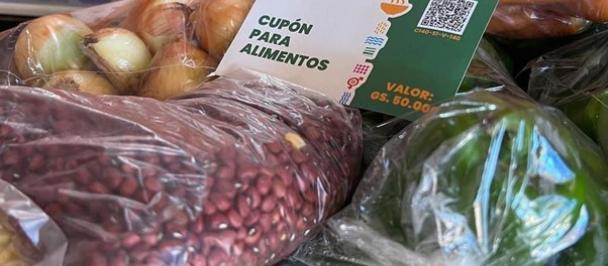We developed and evaluated the impact of an intervention that provided vouchers for food of high nutritional value to members of households in the urban and peri-urban area of San Juan Nepomuceno in the Department of Caazapá.
"Food for all": a strategy to improve access to healthy foods
18 de Mayo de 2022
Photo: Wendá
In our first blogpost focused on food security and social innovation, we introduced the learning loop that the National Innovation Strategy (ENI) and the UNDP Accelerator Lab have been developing as part of the Wendá initiative.
The intervention was developed in relation to the following hypothesis: improving households' economic access to fresh food of high nutritional value will increase the diversity and quality of their diets.
While this premise seems logical, there are many reasons why improved economic access to healthy foods may not translate into a change in consumption, for example because of low cultural appreciation of these foods or lack of time or capacity for preparation in households. This is why it is worth evaluating this hypothesis with evidence before designing public policies.
For this reason, we developed and evaluated the impact of an intervention that provided vouchers for food of high nutritional value to members of households in the urban and peri-urban area of San Juan Nepomuceno in the Department of Caazapá, redeemable at the Ka'avo Farmers’ Market, located in the San Luis neighborhood of this city.
The rest of this blogpost describes how we designed intervention for the "Food for All" learning loop.
How was the San Juan Nepomuceno intervention strategy designed?
The intervention was designed and developed in collaboration with the Technical Unit of the Social Cabinet (UTGS) which collaborated in communicating the objectives and methodology with the local Municipality. In coordination with the Ministry of Social Development (MDS), a workshop was held with family guides of the Tekoporâ conditional cash transfer program to locate beneficiary families. In addition, with the help of the Directorate of Agricultural Extension of the Ministry of Agriculture and Livestock (DEAg - MAG), we made contact with a local farmers’ market organization in order to establish the guidelines for the provision of produce and farm products for the intervention.
Once the agreements with this organization were formalized, the vouchers were distributed to each of the 140 households, which were randomly selected in 8 neighborhoods in the urban area and 4 settlements in the peri-urban area of San Juan Nepomuceno. This distribution was carried out once a week between November 29 and December 23, 2021.
Each household received a voucher worth Gs. 50.000 ($7.33USD) per week for 4 weeks to be exchanged according to their preferences for any of the 50 food items available at the Ka'avo Farmers’ Market. In this way, the households that received the vouchers were able to increase their expenditures on vegetables, seasonal fruits, legumes, corn, corn flour, milk, eggs and other fresh foods available at the farmers’ market for an amount of Gs. 200.000 ($29.33USD) during the month that the intervention lasted.
Upon arrival at the farmers’ market, the voucher holder presented himself before a member of Wenda's technical team to register his voucher, which was stamped with a seal after verification in the database for monitoring and follow-up purposes. Then, the bearer would redeem his voucher for the total value of Gs. 50.000 ($7.33USD) worth of food, while another member of the technical team recorded the amount and type of food exchanged for each voucher. By doing this, it was possible to record the use that each family made of the vouchers, detailing the types of food that were purchased.
At the end of the day, a representative of the farmers’ market organization presented all the vouchers that were redeemed during the day and, after the corresponding verification, handed the vouchers and an invoice to Wenda's technical team to receive the corresponding payment in cash.
Did the intervention improve households' economic access to healthy food?
This intervention was implemented between the months of November and December, making it easier for users of these vouchers to choose food from among 50 options available at the farmers’ market. The availability was linked to the seasonality of production, since at this time of the year the farmers’ market has produce such as fresh and dried beans, sweetcorn, yuca, sweet potato, peanuts, sesame, potatoes, onions, carrots, beets, cucumbers, tomatoes, cabbage, chard, spinach, green onions, zucchini, as well as seasonal fruits, such as watermelon, melon, lemon, coconut, mango, and papaya, among others. Finally, farm products such as cheese, milk, cornmeal, and eggs were available.
Each voucher had a QR code containing information about each of the intervention participants to facilitate tracking of the intervention: house number, week number, redemption day (Tuesday or Thursday) as well as the voucher number associated with the name of the head of household.
The prices of these fresh foods of high nutritional value are usually higher than those of processed foods with higher caloric intake. The use of vouchers improved households' economic access to these foods while allowing them to have a greater diversity of foods on their tables on a weekly basis.
A voucher user from Barrio San Agustín told us that she did not usually have access to a wide variety of vegetables or fruit, but thanks to these vouchers she was able to buy freshly harvested food that she does not usually eat at home due to family budget constraints, but which she prefers, such as pumpkin, corn, butter beans, chard, watermelon and passion fruit. Also, one of the farmers’ market vendors told us that practically all of the vouchers were normally redeemed before 10AM. She told us that they were quite surprised by this situation since initially, both the farmers’ market vendors and the members of the technical team thought that the vouchers would not be fully used.
Clearly, the data and testimonies show that the distribution of vouchers for farmers’ markets is an effective way to generate greater economic access to fruits, vegetables and fresh produce. But does economic access translate into improved dietary quality and nutrition for households? This is the key question to answer for social innovation and the design of innovative food security policies. Answering it requires an impact evaluation strategy, which will be the topic of our next blogpost.
By Cristian Escobar Decoud, Ana Lucía Giménez and the UNDP Accelerator Lab’s team
-
This blog was originally published at National Innovation Strategy's page. For the original publication, click here.
Para la versión en español, click aquí.

 Locations
Locations